How to balance off-camera flash with ambient light for edgy street portraiture
Learn to balance off-camera flash with ambient light for a modern, edgy look to your street portraits
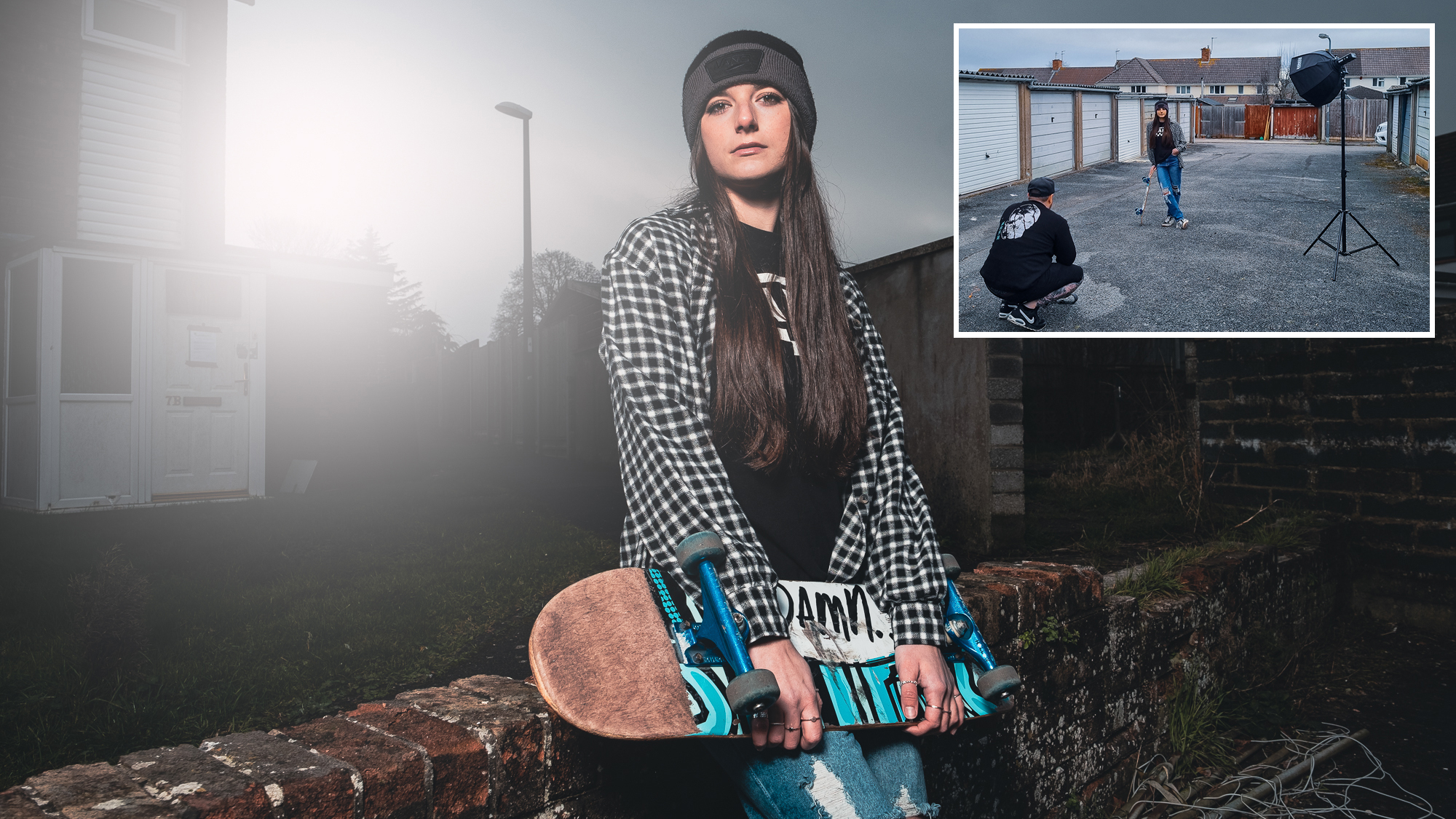
Whether you’re new to photography or a lifelong enthusiast, chances are you've used flash at some point. However, not everyone will have used it off-camera; many flash units are built into or easily attached to top-plate hot shoes. However, by introducing a flash trigger and receiver, you can take the flash off the camera’s body and fire it from a different angle. This will enable you to liberate your images from having to rely on indoor, party style, flat-looking light.
When I took up photography, one of the first items I invested in was a reflector. They are cheap and portable, but when working alone it can be tricky to bounce light when holding the reflector in one hand and firing your shots with the other – and on a windy day you’ve got no chance.
• What is flash, and is it still useful for photography?
To unlock the full potential of my flash, I picked up a basic trigger for my camera and a receiver for the flash unit. Once your flash is mounted on a sturdy stand, you can start shaping the light or countering the sun with your own artificial power. To keep your costs down while seeing how you get on with this technique, you can grab a shoot-through umbrella or pick up a cheap softbox.
Top tips for shooting off-camera flash portraits
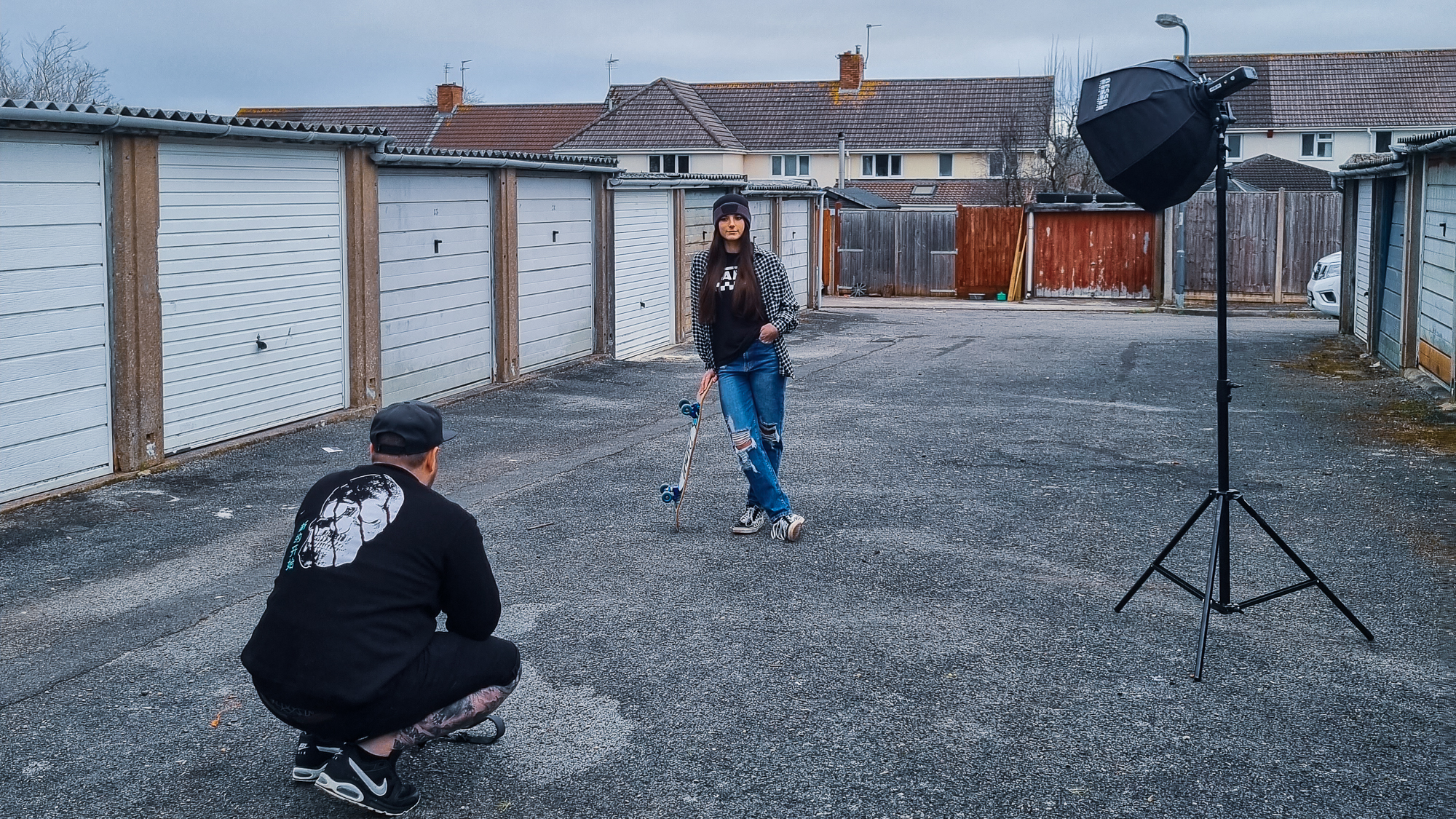
1) Place your light
A good starting placement for your flash will be around 30 to 45 degrees from the camera, at a height where the light is about the same angle above your subject’s head. This will cast a dramatic but still-flattering light on your subject. Any lower and you might get the classic "Halloween" torch-style lighting – which is not ideal.
• Get yourself one of the best flash guns
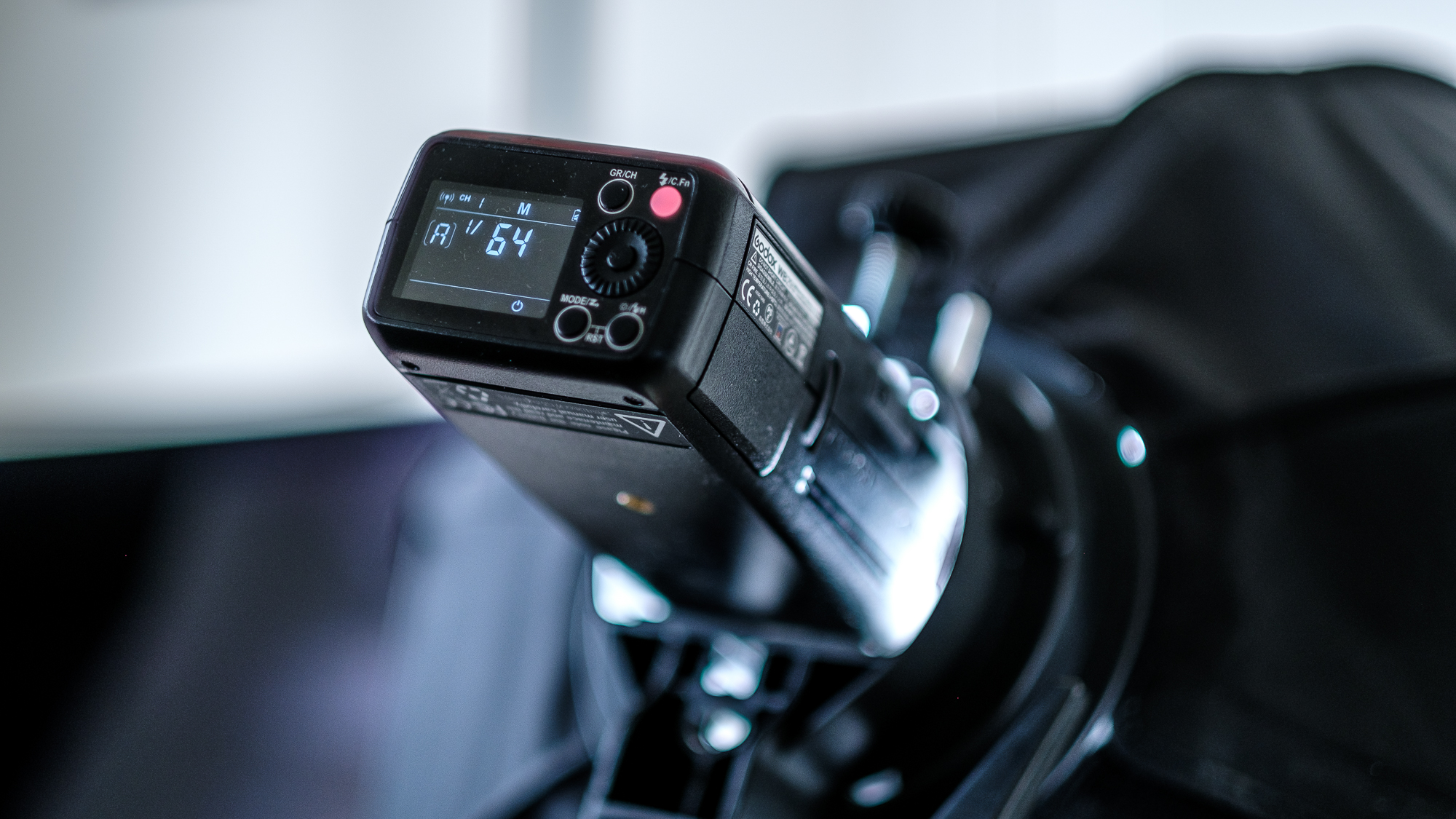
2) Set the flash power
To manually adjust the output of your flash, first switch it from its default TTL (through the lens) mode to M (manual). Start with the following settings: if you’re shooting in full sunlight and want to use an aperture of f/16 or higher, use the 1/1 (full) power setting; if you are shooting at f/2.8 to f/8, without any modifiers such as a honeycomb, start at around 1/16-1/64 power.
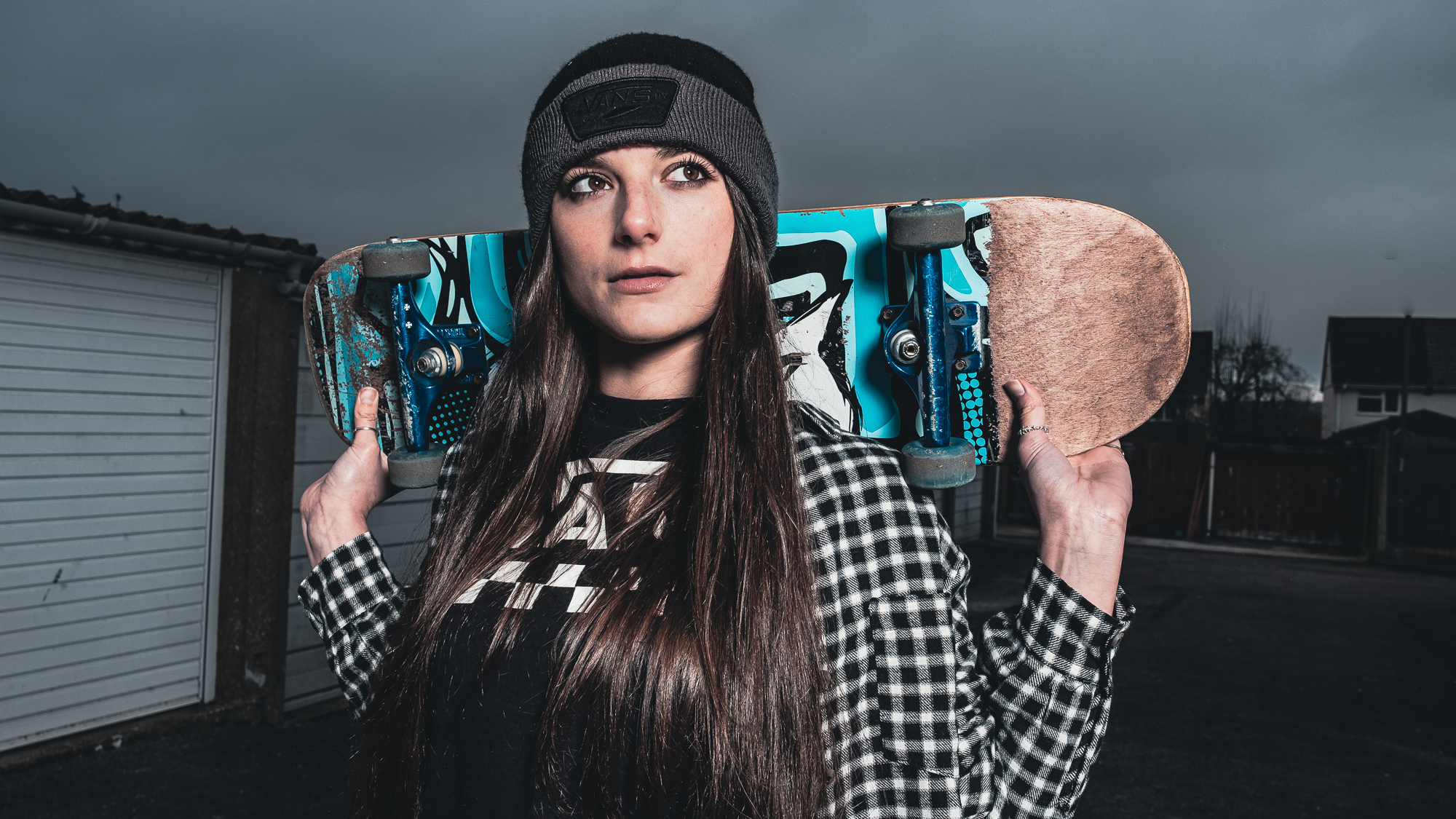
3) Try these settings
Use a low ISO of 100-200 to start with, then set your shutter speed to anywhere between 1/125 and 1/250 sec. Now you just have to experiment with your aperture until the shot starts to look good; for my main image, I settled on f/6.4. If you want a shallower depth of field, such as f/2, then physically move the flash further away from your model.
Alistair’s top tips for balancing light sources
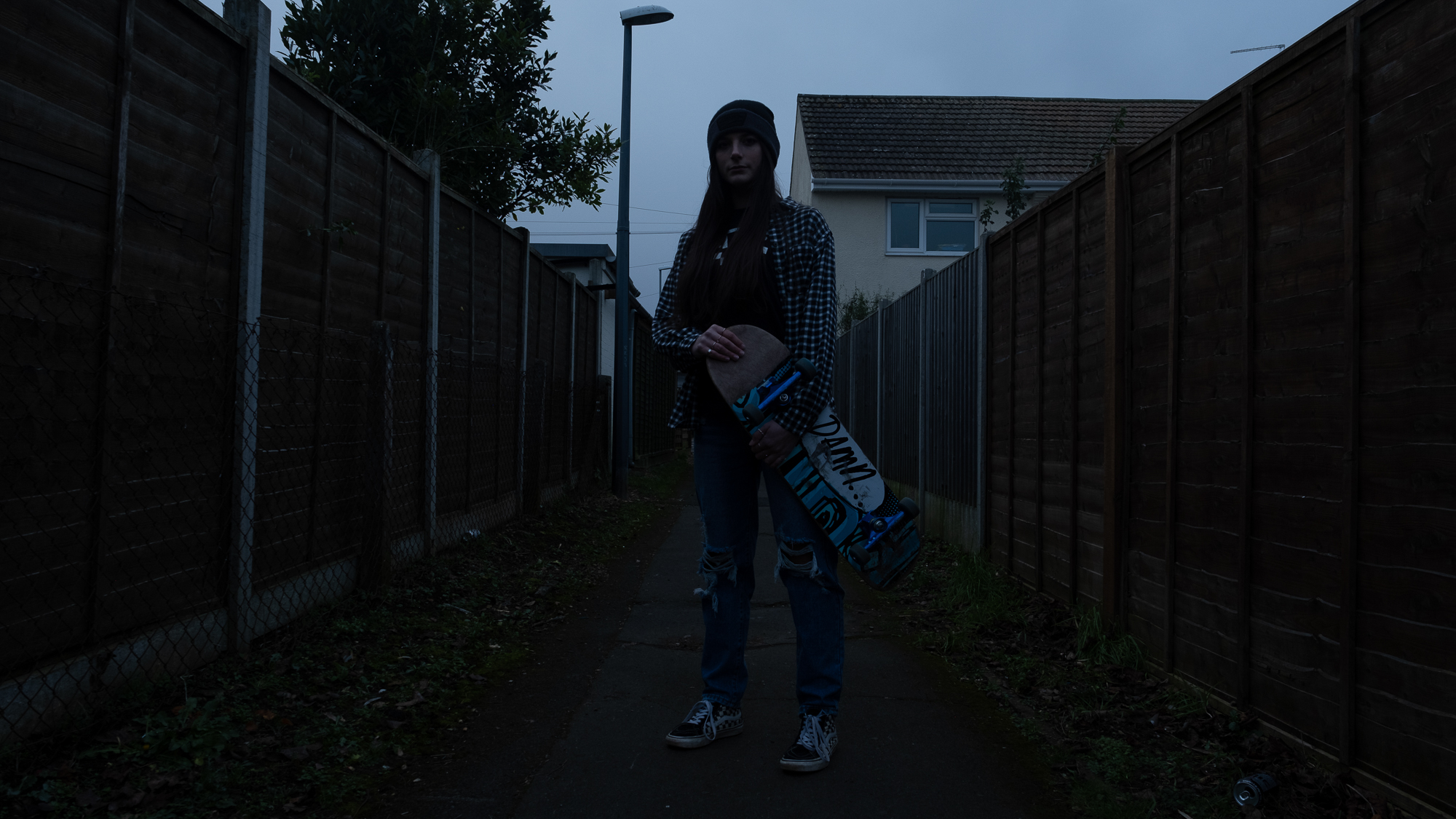
If you have a light meter, take an ambient reading to determine the correct exposure for the background without any flash. For this shot in the alleyway, my ambient light reading was 1/250 sec at f/6.4, ISO 160. In my experience, the firing of the flash creates a pleasing rhythm for the photographer and the model – ask your model to change their pose slightly between each flash. (Using continuous lighting as opposed to flash can sometimes make it difficult for the model to know when you’ve taken the photo.)
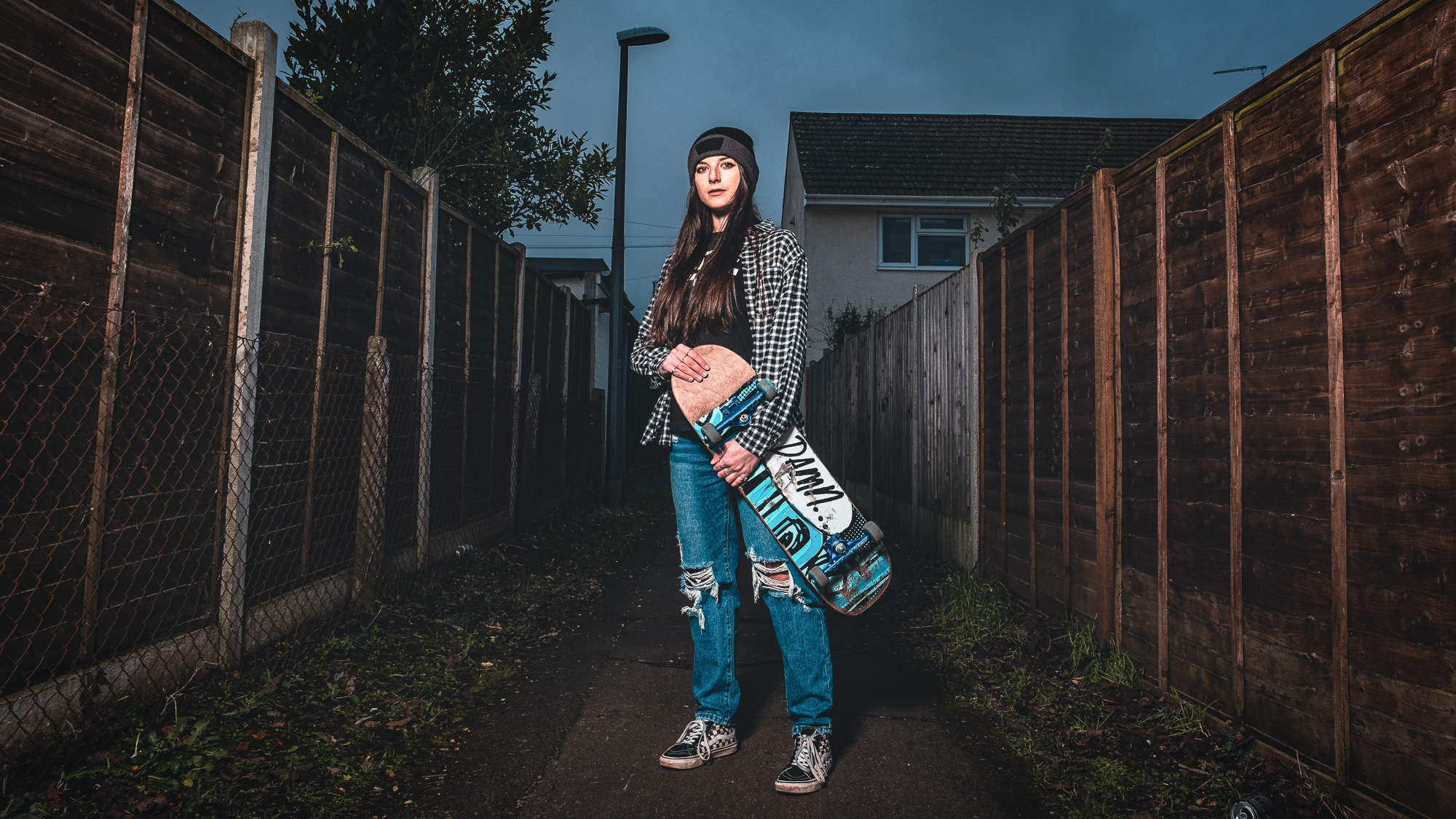
To mix things up creatively, try using different-shaped softboxes. These will give you slightly more or less control over where and how the light from the flash falls – or for a crisp but slightly harsher aesthetic, you could just shoot the flash bare with no modifier. If there is some wind, you will want to weigh your light stand down with some small sandbags or purpose-built light stand weights. It will not only protect your model, but your equipment, too.

Try out new things
You now have a good base on which to build, but you should always be prepared to experiment. The first question I always ask is, "Would this shot actually benefit from off-camera flash?" as the effect can sometimes have an artificial look or appear over-produced. Once you’ve decided to proceed, play around with the light placement, flash power, camera settings and even the number of lights you could use. Here, I used a Godox AD200 strobe on my Fujifilm X-T3 and a Fujinon XF 16-55mm f/2.8 R WR lens.
Model: Ria Williams on Instagram
Read more:
The best light stands
The best Fujifilm X-T3 deals
Godox AD300 Pro / Flashpoint Xplor 300 Pro TTL R2 review
Get the Digital Camera World Newsletter
The best camera deals, reviews, product advice, and unmissable photography news, direct to your inbox!
Alistair is the Features Editor of Digital Camera magazine, and has worked as a professional photographer and video producer.

